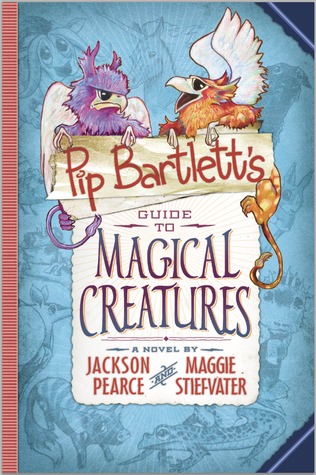[button color=”black” size=”big” link=”http://affiliates.abebooks.com/c/99844/77798/2029?u=http%3A%2F%2Fwww.abebooks.com%2Fservlet%2FSearchResults%3Fisbn%3D9780142180105″ target=”blank” ]Purchase here[/button]
Captain Blood
by Rafael Sabatini
Recommended Ages: 12+
As they went, he considered her admiringly, and marveled at himself that it should have taken him so long fully to realize her slim, unusual grace, and to find her, as he now did, so entirely desirable, a woman whose charm must irradiate all the life of a man, and touch its commonplaces with magic.
I chose this quote (see inset) to illustrate why this book has been so popular since it first appeared in 1922: It is beautifully written, achingly romantic, and full of swashbuckling fun. It’s the kind of novel that you can imagine being made into a film starring Errol Flynn and Olivia de Havilland—which it was, in 1935. This was a remake of an even earlier silent film. Even if you haven’t seen one of these films or read this book, you have probably heard of Captain Blood. His name has become embedded in our culture’s folklore, tied in with children’s make-believe about buccaneers and knights-errant of the sea. There is probably a direct line of lineage between the legend of Captain Peter Blood and the Disney franchise of Captain Jack Sparrow.
Peter Blood does not start out as the sort of many you would expect to become a pirate. A physician by training, a soldier and naval warrior by experience, he has just settled down in a quiet corner of England’s West Country when the Monmouth Rebellion breaks out. This bit of trouble was a response to the Catholic James II becoming king of Protestant England in 1685. Being an Irish Catholic himself, Peter takes no part in the rebellion. But when he is caught giving medical aid to one of the rebels, the full frenzy of the Lord Chief Justice falls on him and he is sentenced to hang for treason. Perhaps it’s a stroke of luck that King James decides to commute the sentence of several rebel-convicts, Blood among them, to ten years of slavery in the plantations of the West Indies. The young doctor doesn’t feel very lucky, though. The injustice rankles him, and the cruelty of his master—a certain Colonel Bishop—embitters him, even though he is allowed to continue practicing medicine rather than toiling in the fields. Arguably the hardest part of his servitude, however, is his growing devotion to the slave-master’s niece, a frank tomboyish beauty named Arabella—hard because of the uncrossable barriers between them. When Blood seizes a chance to escape into a career of piracy, the barriers to their love become even more cruel and seemingly impossible to get over.
I won’t spoil for you what shape this opportunity for escape takes, but obviously it has something to do with ships and sailors and a daring band of outlaws. They roam the sea, mostly taking their feelings out on the Spanish navy, which at that time was little better than a band of pirates itself. They take prizes, recruit followers, and grow into a fleet of buccaneers, based on the lawless French island of Tortuga. And Peter Blood commands them all, exerting a remarkable degree of discipline (for pirates) and restraining their most uncivilized impulses. As far as anyone can in the circumstances, Blood remains a civilized, honorable, thinking pirate. And his men put up with it because, well, he’s just so good at it. Sometimes, though, this means walking a dangerous line between doing what he sees as right and losing control of his crew. And sometimes, even that isn’t enough to justify himself to the specter of Arabella Bishop who rules over his conscience.
There are some funny, old-fashioned expressions in this book, such as “what time” (meaning “while”) and “filibuster” (meaning “pirate”). There are a few sentences you may have to read twice before you can sort out their grammatical subtleties. And there are a couple of plot threads that Sabatini drops without explanation—such as the ominous report of Lord Julian’s developing villainy, which leads to nothing much in particular. In the balance, however, are a love story so juicy that you’ll feel wetness on your cheeks, a series of sea adventures each more gripping than its forerunner, and a tale of poetic justice so satisfying that you will close the book with a sigh and a smile.
If you read this book unawares, you may come away convinced that there really was such a historical person as Captain Blood. Prolific, best-selling, internationally-educated author Rafael Sabatini—whose works are always described as “historical novels”—takes pains in this book to suggest that its writing was chiefly a case of selecting, arranging, and retelling the contents of credible historical documents, with only a teensy bit of embellishment for popular effect. He even quotes directly from the original documents, describes where they can be found for further study, and argues that a particular caper elsewhere attributed to Captain Morgan seems more likely to have been pulled off by Peter Blood. And yet Morgan is actually one of several historical figures on whom the very fictional Captain Blood is based. And so, in part, this book is the cleverest literary hoax I have seen since William Goldman fabricated a certain “S. Morganstern classic.” I say this not to gloat. Until I did a little independent research, I had fallen for it too.
Originally titled Captain Blood: His Odyssey, this book started out as a series of short stories published in magazines in 1920–21, later recast in novel form. Its two sequels—Captain Blood Returns and The Fortunes of Captain Blood—are really collections of additional short stories featuring the same hero. Among Sabatini’s numerous other books, mainly of the “swashbuckling romance” variety, are such titles as Scaramouche and The Sea Hawk, each of which was also made into at least two movies, including another Errol Flynn vehicle. He also wrote on non-fiction subjects, including the Borgias and the Spanish Inquisition—subjects chosen, I gather, for their ready access to thrills, chills, and other entertainment opportunities.




